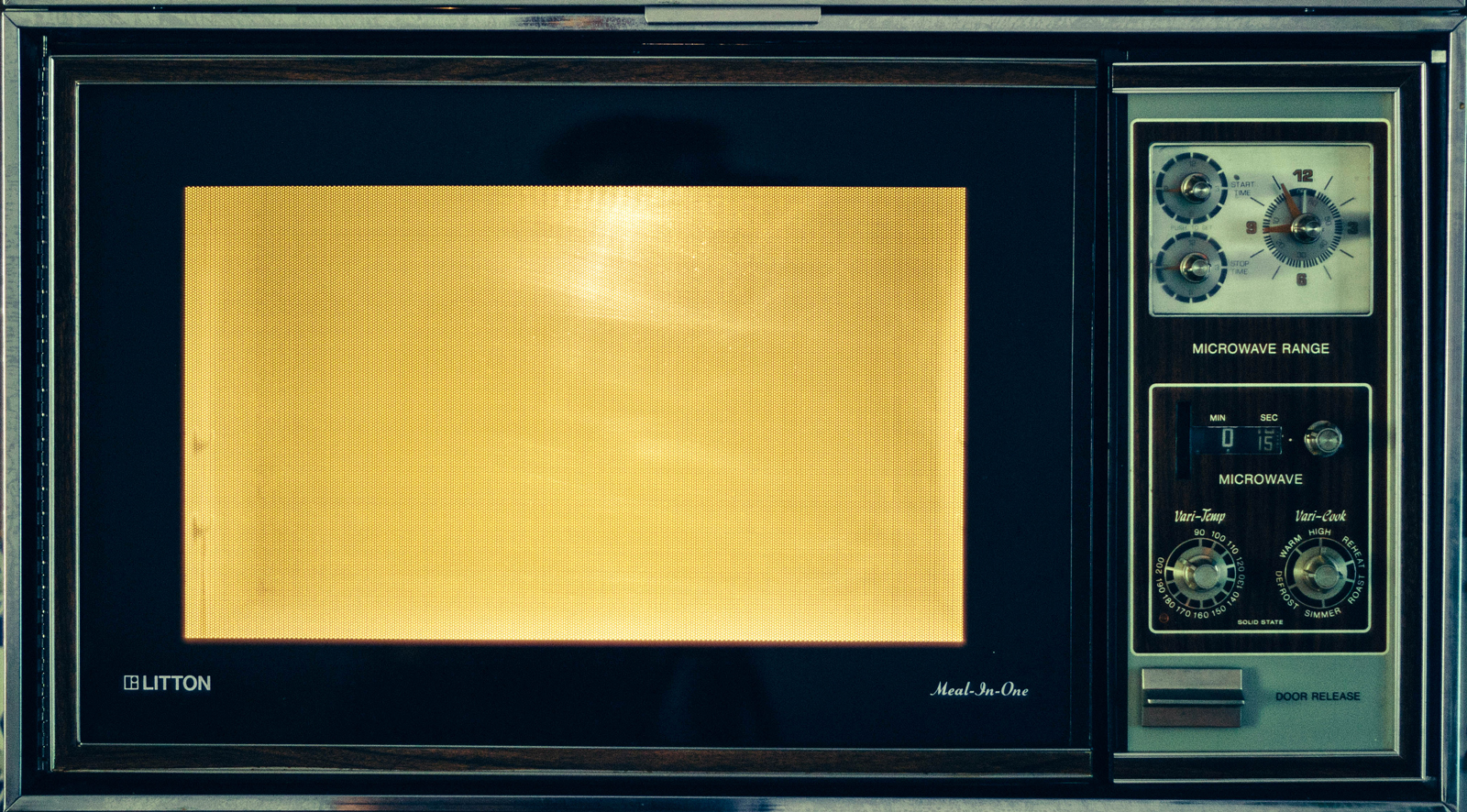All products featured are independently chosen by us. However, SoundGuys may receive a commission on orders placed through its retail links. See our ethics statement.
Is Bluetooth Dangerous?
September 1, 2018
I want to make sure that you’re aware that if you’ve been told your cellphone is dangerous—or that your Bluetooth headphones are going to give you cancer—you’re listening to an argument with a severe lack of data to back it up.
None of the available research has proven any effect on humans, and yet: search Google for “is Bluetooth dangerous?” and you’ll be met by nothing but sites that sell RF protectors, junk science, and even journalists duped into parroting falsehoods. It’s an unfortunate situation, but we’ve seen it happen many times before. However, I’m not the kind of guy to leave you hanging.
Is Bluetooth dangerous?
![Crazybaby Air nano[8] A photo of a man wearing true wireless Bluetooth earbuds.](https://www.soundguys.com/wp-content/uploads/2018/01/Crazybaby-Air-nano8.jpg)
If someone wants to know the possible health concerns surrounding Bluetooth, they’re told by Google:
- “Cellphone radiation” is dangerous, buy these protective trinkets!
- Wireless tech increases the incidence of a rare tumor called a schwannoma
- Bluetooth increases the risk of cancer
- Cellphones can cause a drop in male fertility
- Bluetooth and other RF tech increases incidence of autism, ADHD, and behavioral disorders
- Bluetooth can microwave your brain like, you know, an actual microwave
- Bluetooth headphones cause depression
- Bluetooth headphones cause nerve cell death
Any normal person looking at all that would be horrified. And why shouldn’t they be? Their music habit is going to fry their brain, make them sterile, and give them cancer?! But is that really true? Seems like someone would have noticed that and done something by now, right?
In order to find the answer to our question, we need to find the answers to a few things, namely:
- How could Bluetooth possibly harm a cell, cause cancer, or otherwise hurt you?
- Does Bluetooth have the power to do so?
- Is there scientific finding to support the notion that Bluetooth is harmful or harmless?
Let’s dig in.
Can Bluetooth cause cancer?
No—at least, not in a way that we know of yet. The ability of Bluetooth to harm someone boils down to its ability to affect cell function, and/or its DNA. However, Bluetooth isn’t a type of radio frequency electromagnetic radiation (RF EMR) capable of damaging your DNA on its own.
In order for radiation to cause cancer in a cell, it has to break the bonds of the molecules that make up your DNA to the point where the information is changed upon cell division. The way to do that is with a certain type of radiation called “ionizing radiation.” When ionizing radiation damages your DNA, it knocks electrons out of atoms and molecules, changing the properties of the atoms and breaking bonds in the DNA’s component molecules. Should enough radiation of that type be applied, it’s possible to damage the DNA enough that errors happen when the cell reproduces—potentially causing tumor cell growth.

Bluetooth is what’s called non-ionizing radiation—because it can’t knock electrons out of the base molecules in your DNA needed to replicate your cells. Other types of non-ionizing radiation are visible light, FM and AM radio, your microwave, and more. This type of radiation much different than ultraviolet light, gamma radiation or rubbing yourself down with enriched uranium. While many of the studies cited on Facebook groups contain some anecdotes of tumors being grown among heavy wireless users, there’s no proven link between cancer incidence and the levels of RF EMR emitted by Bluetooth headphones.
When the WHO says that non-ionizing radiation like cell phones and Bluetooth use is “potentially cancerous,” that classification is reserved for chemicals, items, and conditions that show:
Limited evidence of carcinogenicity in humans and less than sufficient evidence of carcinogenicity in experimental animals OR
Inadequate evidence of carcinogenicity in humans but sufficient evidence of carcinogenicity in experimental animals OR
Inadequate evidence of carcinogenicity in humans and less than sufficient evidence of carcinogenicity in experimental animals, but with supporting evidence from mechanistic and other relevant data — WHO
We don’t know that it’s totally impossible, but saying that it’ll never happen is selling short our ability as humans to do… impressively unwise things.

Now, there was a study performed by the National Toxicology Program with equivocal evidence of RF EMR causing certain tumors, but that was only possible with an absolutely ridiculous exposure regimen. Mice and rats were blasted with 2G cell signals blasted at 2-7 times the mandated exposure limit over their entire bodies for 9 hours a day for two years (and in utero). The incidences of tumors were so low that upon peer review, the panel noted that the math used to determine statistical significance was not only suspect, but the populations were mostly within the statistically-observed control rates to begin with. One peer-reviewer found that the power would be 14% for that population, meaning that the study stood a high chance of kicking back false positive findings.
Because the study concluded its review identifying “clear” evidence of carcinogenicity in male rats (but not female rats), many point to this study as clear evidence of RF EMR causing cancer in humans. But keep in mind, this is a study performed on rats and mice, not humans—and to achieve the radiation experienced by those rodents, it would be extremely difficult to do so without intentionally doing it to yourself. While we learn a lot from these studies, they don’t give us the clear, hard answers we’re looking for. In this case, “clear evidence” of RF EMR causing tumors in rats simply means that further study is merited, and it absolutely is.
Given that Bluetooth at maximum doses you with less than 1/2,000th the output levels tested, we can ignore this study for this particular topic—it’s not talking about the same conditions as a human listening to Bluetooth headphones.
If you were in a room with a lot of Bluetooth devices, can they cook you like a microwave?
No again.
Microwaves use overwhelming power to excite water molecules in the things they cook. While it’s true they use radio frequencies in the same range as Bluetooth, the difference in power is staggering. Ordinary microwaves typically use 1,200 Watts (W) of power to cook, and that’s several orders of magnitude higher than .
Bluetooth devices like headphones vary in power output, but here’s the rundown:
- Bluetooth class 1 emitters max out at 100mW
- Bluetooth class 2 emitters max out at 2.5mW
- Bluetooth class 3 emitters max out at 1mW
Now, I should point out that mW means “one thousandth of a Watt,” meaning that you’d need 12,000 class 1 Bluetooth emitters like cellphones running at full power, directly mashed onto your skin to dose yourself with the same power a microwave could. Oh yeah, didn’t I tell you that non-ionizing RF emissions lose power dramatically over a distance? Bluetooth’s power decay follows the inverse square law, so every time you double the distance from the emitter to the subject, only 1/4 of the power reaches.

All of the figures listed here are the power outputs at the source, and not at the receiver. Even if you removed the casings, you could only fit 456 iPhone X handsets (5.65″ x 2.79″ x 0.3″) into my current microwave (18″ x 10″ x 12″), to reach 45.6 Watts of Class 1 Bluetooth RF EMR or—far short of the 1,200 Watts needed to match a common microwave. That doesn’t mean it’s impossible for Bluetooth to harm you, but it does paint a picture of what kind of ridiculous exposure it might take.
Can Bluetooth make me sterile?
Probably not, but again: it’s not impossible, just extremely improbable. And after how many times I’ve carried upwards of ten phones in my pocket for testing, the existence of baby Thomas seems to disprove that theory, but there’s other evidence that phones can’t make you sterile. Now that we’ve established that Bluetooth and cellphones can’t damage your cells’ DNA, what about your most vulnerable bits?
But cellphones are really good at creating something else that's good at frying your huevos: heat.
In several studies, lower sperm motility was noted based on heavy use of cellphones. But heavy use of cellphones is a really good way to create something else that’s good at frying your huevos: heat. This confounding factor makes it very difficult to tell whether it was the phone, or the heat that led to the drop in sperm motility in the handful of studies that found it. When controlling for heat, there is evidence of reduced sperm motility in male rats, but again: Bluetooth has such a mind-bogglingly lower power in its use, so this isn’t the same thing. The difference in mass, volume, and distance from the emitter all plays a role here, and while rats can tell us if there’s a potential problem, it isn’t the same thing as testing on humans.
The evidence for RF EMR affecting reproductive health in men has more evidence than the cancer causation, but it too isn’t applicable when it comes to Bluetooth in particular. With the lower power emitters that these devices use, the radiation we’re talking about with Bluetooth headphones falls well short of the test parameters used for cell phones. If you’re worried about this sort of thing, you’ll see better sperm outcomes by wearing looser underwear than you will by avoiding Bluetooth headphones. If you’re trying to have a baby, you should be doing this anyways.
Is there scientific finding to support the notion that Bluetooth is harmful?
The truth is there’s no proof low-power RF EMR can damage cells, but as it is with any subject: our understandings of things can change with new evidence.
While there’s a theory that cellphones are strong enough to stimulate cells into doing things like leach calcium, or temporarily suppress glucose absorption by the brain: so far the findings of different researchers don’t agree each other. When that happens, it’s a good sign there’s more going on than what was covered in the studies, and a bigger effort is needed. However, these scary-sounding events—if true—would also cause other signs including an increase in a couple types of cancer, and so far that hasn’t really happened. There doesn’t appear to be a relationship between cell phone use and cancer incidence as a whole.
Many experts feel that these claims don’t merit a response, so giving them the attention is wasted effort—and addressing these concerns could lead someone to believe that this is an issue with two sides worthy of consideration. But the truth is, this is just another time where there’s a right answer and a wrong answer. If you want to learn more about the National Toxicology Program studies and Razzamini studies that are often used to justify anti-wireless efforts, we discuss them in a sister article on Android Authority discussing the advent of 5G cell signals.
Frequently asked questions about Bluetooth
Yes, 100%. In addition to the research required to prove it linked in the article, you can look around online for plenty of other scientists, governmental organizations, and education institutions all confirming the same thing. The reason why this article exists in the first place is that many of the experts on the subject are not meeting people where they are (researching things on Google). We’re using our platform as a site of audio experts to make sure the facts are much easier to find for anyone concerned by the misinformation out there.